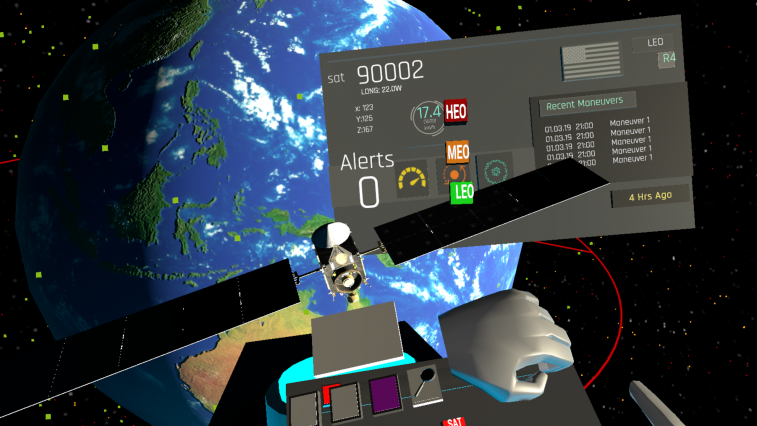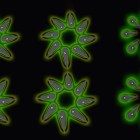 April 13, 2019 – A six-person team of MIT students and alumni have emerged as first-place winners for their prototype of a virtual reality tool they called CoSMIC (Command, Sensing, and Mapping Information Center). The team entered the US Air Force’s ‘Visionary Q-Prize’ competition in October 2018.
April 13, 2019 – A six-person team of MIT students and alumni have emerged as first-place winners for their prototype of a virtual reality tool they called CoSMIC (Command, Sensing, and Mapping Information Center). The team entered the US Air Force’s ‘Visionary Q-Prize’ competition in October 2018.
The challenge was hosted by the Air Force Research Labs Space Vehicles Directorate and the Wright Brothers Institute to encourage nontraditional sources with innovative products and ideas to engage with military customers to develop solutions for safe and secure operations in space.
CoSMIC, a VR visualization tool for satellite operators, placed first in the Augmented Reality/Virtual Reality category. “More than 23,000 objects — from satellites to debris to spent rocket bodies — are in orbit and being tracked,” said Eric Hinterman, a graduate student in MIT’s Department of Aeronautics and Astronautics and member of the winning team. “The challenge was to develop a user interface to help visualize these objects and predict if they’re going to collide, and what we can do to avoid that.”
The goal of CoSMIC is to enable satellite operators to process more data than they could using a standard 2D screen. The technology minimizes mental workload and allows operators to more easily perform maneuvers and focus their attention on user-selected objects.
“Space is such a dynamic and complex environment that is becoming more and more congested and contested. We need to be able to display and interpret data faster and more accurately, so we can respond quickly and appropriately to any kind of threat, whether it’s adversarial, space debris, or satellites in close proximity,” said Gen. Jay Raymond, Air Force Space Command and Joint Forces Space Component commander. “The VQ-Prize challenge is a prime example of how we’re thinking and sourcing, outside the box, to get after rapid, agile onboarding of new technology that will make space operations safer for everyone.”
“We very intentionally sought out AR/VR enthusiasts and influencers at the outset of this challenge,” added Raymond. “And the solutions we received prove there’s a wealth of great ideas out there and that we need to continue to create avenues such as the VQ-Prize to connect innovative ideas to needs.”
Hinterman and his team built their prototype from commercially available components, including an HTC VIVE Pro headset and a hand-tracking sensor. “You put on the headset, and it immerses you in the world of the satellites,” he explained. “You’re looking at the Earth, and satellites surround it as tiny pinpricks of light. Their orbital data are accurate, and you can zoom in on any of them.” The hand-tracking sensor allows operators to see their hands and to grasp and move objects as they would in the real world.
CoSMIC was developed in the studio of the VR/AR MIT, an organization for MIT students interested in virtual and augmented reality, of which two teammates are members. Hardware and other resources in the studio are available for student use, thanks to corporate and individual donors who sponsor the student-run group.
In mid-March, the team spent a week at the United States Air Force Academy in Colorado Springs showcasing the CoSMIC prototype. Satellite operators in Colorado Springs shared with them their challenges and their current procedures and tools, from which the team will be able to tweak their prototype. Likewise, the Air Force development team had a chance to examine CoSMIC and consider ways to integrate it with their existing tools.
This month, the MIT team will attend Space Symposium in Colorado Springs, an annual conference of professionals from the space community ranging from the military to cyber security organizations to R&D facilities.
“It’s been a fun challenge,” said Hinterman. “I think CoSMIC will be very relevant in the next couple of decades as the number of satellites being launched into orbit increases dramatically.”
Image credit: MIT/CoSMIC Team
About the author
Sam Sprigg
Sam is the Founder and Managing Editor of Auganix. With a background in research and report writing, he has been covering XR industry news for the past seven years.




